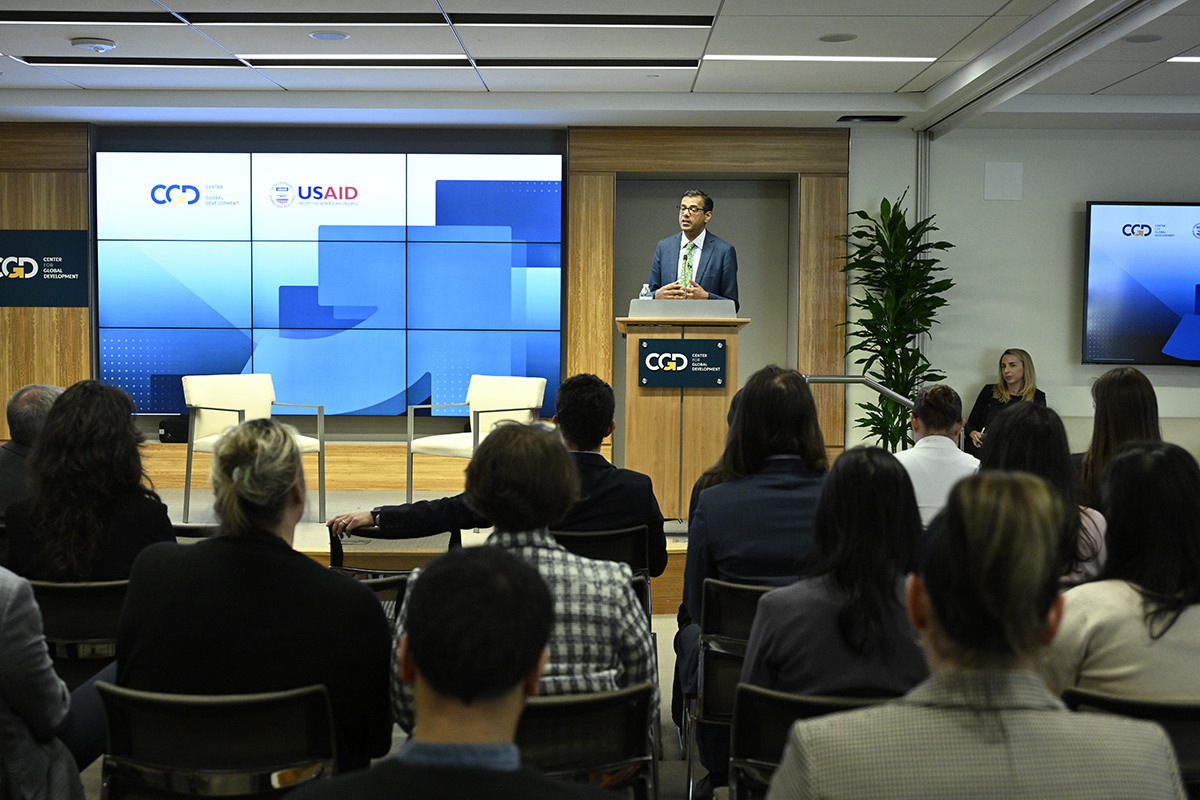What does the collective wisdom of four USAID administrators have to say about the future of the world’s largest development agency? Three former administrators joined current USAID Administrator Gayle Smith at the USAID Alumni Association’s (UAA) annual general meeting to discuss what they wish they had known before they started the job and what advice they would give a new agency lead. Here at Rethink, we were pleased to see a number of parallels between CGD’s own agenda for USAID and what the administrators had to say.
We heard the following four recommendations from USAID’s top brass that we are highlighting as USAID embarks upon a new era. Note: these recommendations do not necessarily reflect the opinion of all administrators:
Review congressional directives and presidential initiatives
The next administration should review existing directives and initiatives before adding another initiative. Gayle Smith used the analogy of a full closet: “If I buy a new pair of shoes, another pair have to go…if we’re going to add another directive or procedure, then one has to go or one has to be consolidated somewhere else.” She also said it was necessary to regularly review the portfolio of directives and initiatives. “I think there’s an accrual of these things without a deliberate pause to say well, what are all of these?”
Our take: Casey Dunning and Ben Leo’s White House and the World brief on USAID calls for a top-to-bottom review of USAID that accounts for presidential initiatives and a commissioned report on existing congressional directives. Directives and initiatives are two long-standing constraints to fundamental reform and adaptation at USAID.
Get a seat at the policy table
Several administrators asserted that USAID needs to be empowered to have a seat at the policy table, perhaps by giving the administrator a seat in the Cabinet, so the agency can communicate the development perspective to other agencies. Brian Atwood, who served as administrator under President Bill Clinton, said, “If you don’t have a voice at those tables, you’re going to see your own development initiatives undercut.” Smith echoed his statements, adding that other agencies are often eager for USAID’s input because of its expertise in the development space.
Our take: Dunning and Leo’s brief on USAID includes two relevant recommendations: (1) the next president should provide USAID with budgetary and policy primacy over areas in which the agency demonstrates efficacy and focus; (2) the USAID administrator should again be dual-hatted as director of the State Department’s F Bureau.
Lead the interagency process without dominating
At the same time, USAID need not dominate the development space to be a leader; it can play a key role by bringing together different partners and agencies. Smith said of USAID’s leadership, “It’s leadership of all the various parts of government that have a role to play. That means working with other agencies and learning how to do that.” Henrietta Holsman Fore, who served as administrator under President George W. Bush and currently serves on CGD’s board, highlighted USAID’s expertise in bringing together partners for initiatives like public-private partnerships, especially on the local level.
Our take: In July 2016, we held a roundtable discussion on how the next administration can maximize USAID’s development impact, using Dunning and Leo’s brief as a starting point. The conclusions of the roundtable discussion can be found in a follow-up memo. One of the key takeaways from the roundtable was that working with other agencies is especially critical during the presidential transition. Participants cited the lack of communication between USAID, MCC, PEPFAR, and other transition teams during the most recent presidential transition. On Fore’s point on USAID’s expertise, USAID is working to expand local partnerships through its Local Solutions initiative. USAID’s next steps are to develop and monitor the outcomes and impacts of Local Solutions.
Spend as much time on the inside as the outside
The next administrator needs to spend time and resources improving USAID’s internal capacity, human resources, procurement, hiring, and data management. Peter McPherson, who served as administrator under President Ronald Reagan, said getting the agency working well “should be a stated, up front” priority. Smith indicated it may be necessary to apply political capital to reform these internal processes. Smith, who initiated a strategy to transform human resources, added that the next administrator needs to pick up the baton to ensure continuity on these issues.
Our take: As discussed in the memo, participants at the roundtable cited a need to address internal weaknesses at USAID, especially hiring procedures. The memo suggests USAID focus on hiring for specific skill sets, providing more funds for staff preparation and training, and allowing local staff to have more managerial roles.
UAA is a non-profit organization that aims to foster collegial networks of former USAID employees and promote exchange of knowledge among alumni. Their annual general meeting was held at the Center for Global Development on October 21, 2016. The meeting included panels on the history of US foreign assistance from 1789-1950 and lessons from countries where USAID phased out assistance. The day culminated in a speech by Smith and a panel with Atwood, Fore, McPherson, and Smith.
Disclaimer
CGD blog posts reflect the views of the authors, drawing on prior research and experience in their areas of expertise. CGD is a nonpartisan, independent organization and does not take institutional positions.





